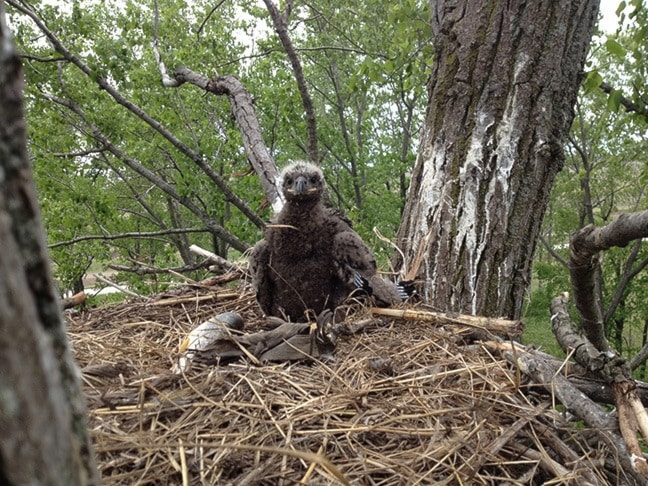It is that time of year when eaglets risk falling from nests and tree branches as they prepare to take flight.
“Look up at an eagle nest and you may see large eagle chicks,” said Warren Warttig, Mountainaire Avian Rescue Society (MARS) Wildlife Rescue Centre president and biologist. “Not quite ready to fly, they are in danger of falling out of the nest.”
Each year, the wildlife centre rescues and cares for young eagles until they can be released to the wild. Eaglets are light grey and fluffy when they first hatch and have dark brown feathers within about 12 weeks. During early development eaglets will venture from the nest on to tree branches, important steps before fledging when the eaglet makes its first flight.
“If you find an eagle that is injured or has fallen from its nest, call us and we will rescue the bird,” said MARS supervisor of wildlife care Reg Westcott.
MARS personnel are pleading with members of the public not to rescue the bird themselves. While concerned citizens have their hearts in the right place when they bring eaglets into the rescue facility, what they don’t realize is that often-times, the baby they have just rescued did not need rescuing, and was simply going through the learning process.
Thirty-nine bald eagles, including eaglets, were treated at the wildlife rescue centre in 2015.
MARS, a licensed and regulated facility, has provided rescues, rehabilitation, recovery and release for injured and orphaned wildlife in central and northern Vancouver Island since 1995. With more than 800 cases in 2015, this volunteer-powered, donor-funded organization is building a new, larger hospital and recovery centre in the Comox Valley.
For more information, or to report a wild animal in distress, call the MARS Wildlife Rescue Centre at 250-337-2021(Emergency number: 250 897-2257).
–Mountainaire Avian Rescue Society
